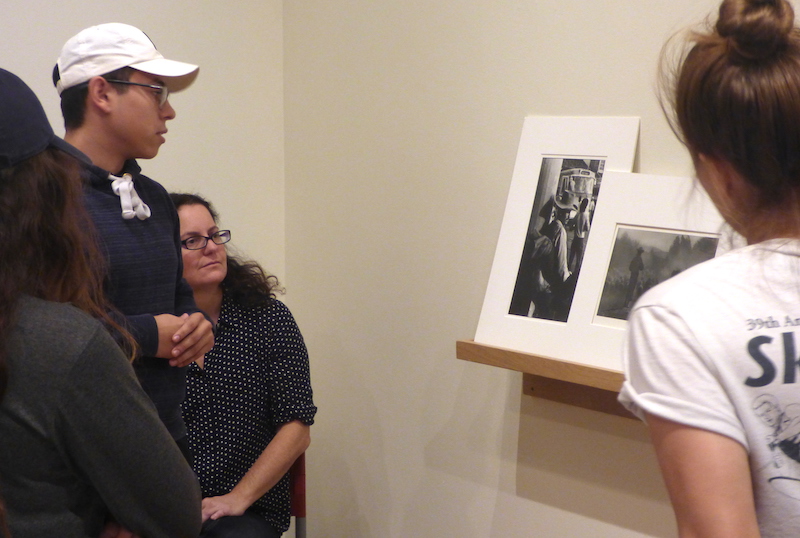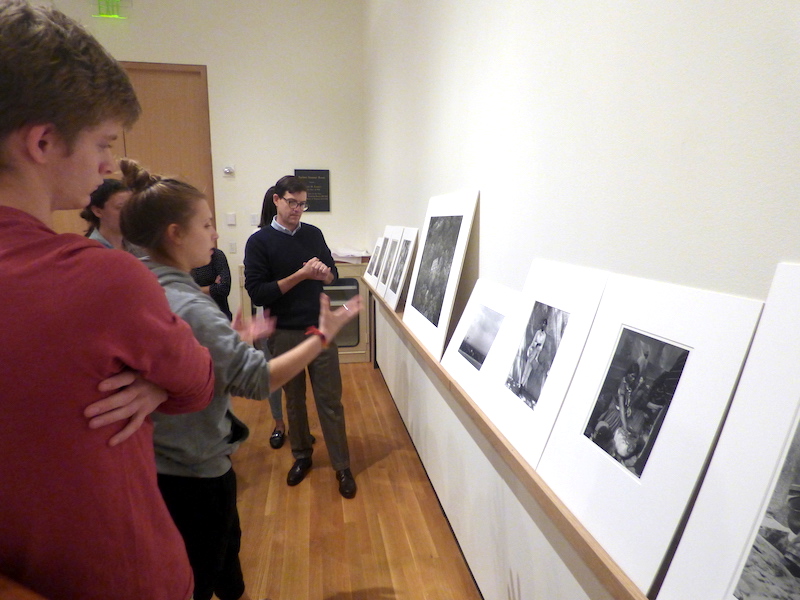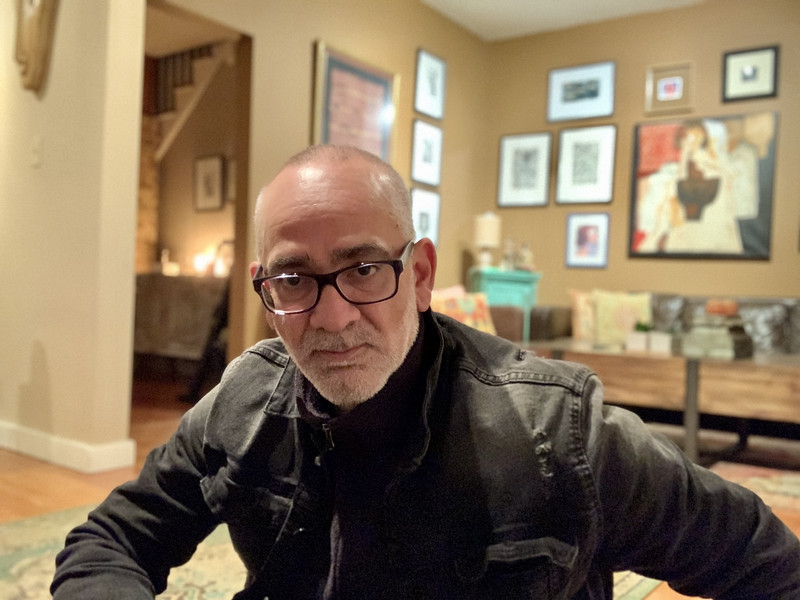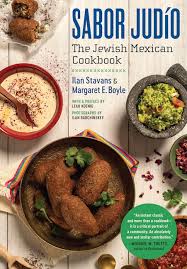Literature Students Curate Mexican Photography Show to Reveal a Century of Change
By Rebecca Goldfine
The show Pasado y Presente: Twentieth-century Photographs of a Changing Mexico features fifteen prints depicting life in Mexico over the past century. "Through the lens of artists sensitive to a changing country," the exhibition reveals a nation emerging from a violent revolution and remaking itself as a global economy. It is open through March 15.
The upper level class, War of the (Latin American) Worlds, was offered by Associate Professor of Romance Languages and Literatures Carolyn Wolfenzon Niego in the fall. As a pedagogical habit, Wolfenzon frequently teaches literature in conjunction with other art forms from dance to painting.
"In general, I like to show how different arts are connected," Wolfenzon said. "When you have this analytical eye, or analytical skill from reading literature, you can apply it to seeing photography differently, or seeing dance, movies, or even ruins differently. You connect more with a culture."
In the class, students read works by Chilean, Peruvian, and Mexican writers, including Carlos Fuentes, Roberto Bolaño, and Mario Vargas Llosa. They also made several trips to the Museum throughout the semester to explore the College's holdings and discuss Latin American art with Sean Burrus, the Andrew W. Mellon Postdoctoral Curatorial Fellow.





Though the class's focus was literature from Peru, Chile, and Mexico, the students decided their show would focus solely on Mexico. They selected fifteen photographs by twentieth-century Mexican artists from Museum collections. The show include prints by Manuel Alvarez Bravo, Manuel Carrillo, and recently acquired work by Kati Horna, as well as three photographs by Americans who visited Mexico.
In addition to teaching the students how to put together a museum show, Burrus offered them a lesson on Mexican art history ranging from the 1910-1920 Mexican Revolution to the economic expansion known as the Mexican Miracle (1954 to 1970). Both historical periods were accompanied or followed by flourishing art movements, as the country transformed and its people engaged in national self-reflection.
"Just as in the case of the revolution, you have this moment with the Mexican Miracle when Mexico is wrestling with its identity," Burrus said. "As it is rapidly modernizing and joining the global market and economy, it is reflecting on how it can hold on to its traditions and culture."
Each student was responsible for selecting one photograph and writing accompanying display text for it. They also paired their interpretation with a passage from one of the Mexican authors—Juan Rulfo, Octavio Paz, Jose Emilio Pacheco, Sabina Berman, Elena Poniatowska, Paco Ignacio Taibo II, or Carlos Fuentes—whose works they read in class.






Maria Perez Mendoza ’21: "I think one of the biggest benefits of studying literature and photography simultaneously was the ability to materialize cultural symbols beyond literature and interpret them with a different sense to facilitate access to art. Essentially, pictures can be understood universally. I think this exhibition is a great way to open up a discussion—not only on Bowdoin's campus, but to the whole Brunswick community—about the possible cultural similarities they can find with a different country."
Erin Harris ’20: "We got to oversee the exhibition from start to end, and were actively involved in everything from the photo selection, label writing, and design layout of the gallery. I believe that my Spanish class was incredibly cognizant of the fact that this exhibit would have a profound on the Brunswick community, and while the process was challenging and frustrating at times, at the end of the day I could not be more grateful to have had this experience. I hope that everyone will love the exhibition just as much as we enjoyed making it!"
Luis Miguel Guerrero ’20: "From Mexico, to Chile and Peru, I enjoyed working with my classmates and seeing how the topics we had been discussing in class were related to photographs that captured a glimpse into the lives of people in these countries, but specifically Mexico. Through discussion on literary works in relation to the photographs from artists like Manuel Carrillo, I learned from my interpretations and those of my classmates how Mexico's progression and rich cultural heritage manifests itself in the country today. Additionally, now more than ever, we wanted to shed a different light on a country that has been a major talking point in recent political discussion."
Clare Murphy ’20: "I really enjoyed this experience and found it to be a unique way to engage with the subject matter of Mexican identity over time through photography. The class was intentional in trying to create an exhibition that challenges popular conceptions of Mexico in the US. While we wanted to represent Mexico's rural, agricultural side and the importance of religion, we also wanted to depict city life and the changing representations of women. We kept this in mind as we constructed the layout of the exhibit, putting the most 'modern' and 'progressive' looking photographs in the place where they would be seen first. I was struck by how easy it was to make connections between the texts we read in the course and the photographs we selected, and found that examining photographs really complemented our literature studies. I hope that in the future, the Museum will include even more works from the region, which is so often underrepresented in US art museums."
Emma Lawry ’20: "For me, the most meaningful aspect of the exhibition was discussing the overlapping themes and commonalities that many photos share, then figuring out what underlying message we wanted to project. It was also really interesting to work with Sean Burrus, who was able to guide us in thinking about organizing, labeling, and curating the exhibition. I hope the Museum continues to feature different Latin American countries to shed light on various themes that persist today, including colonialism, the importance of land, progress, and urban versus rural settings."



